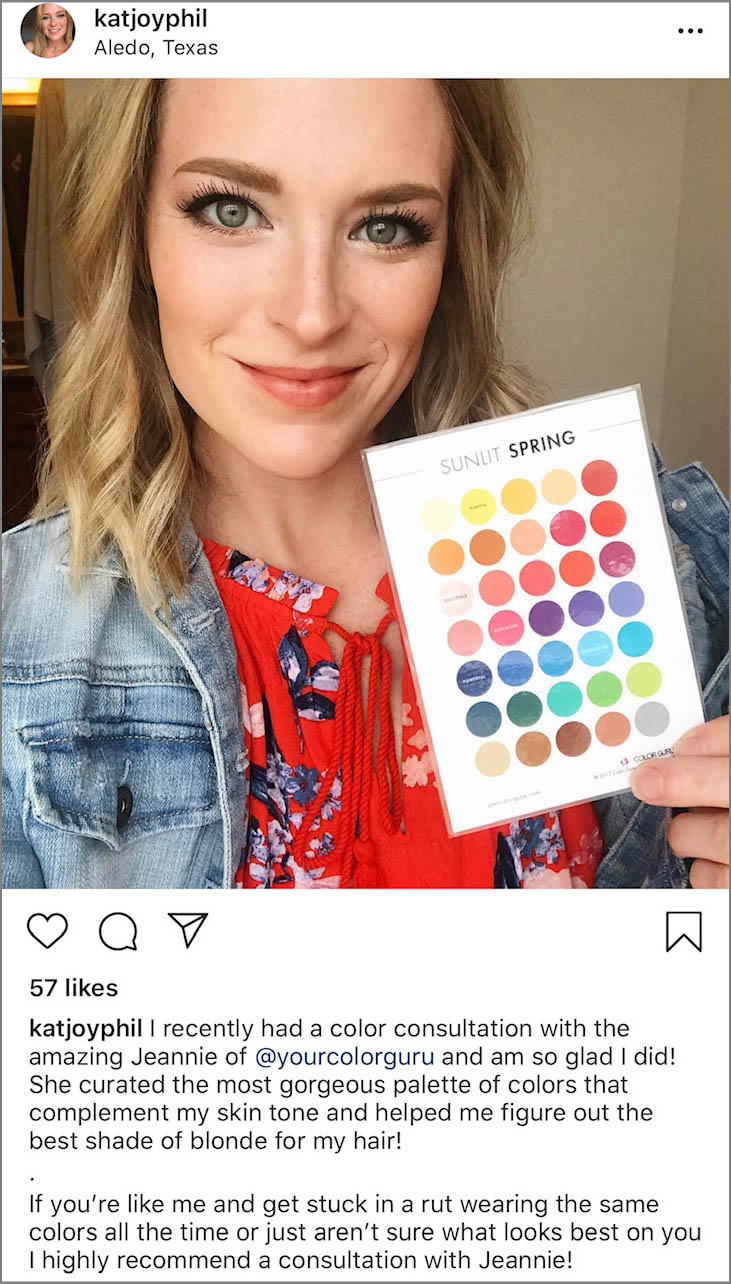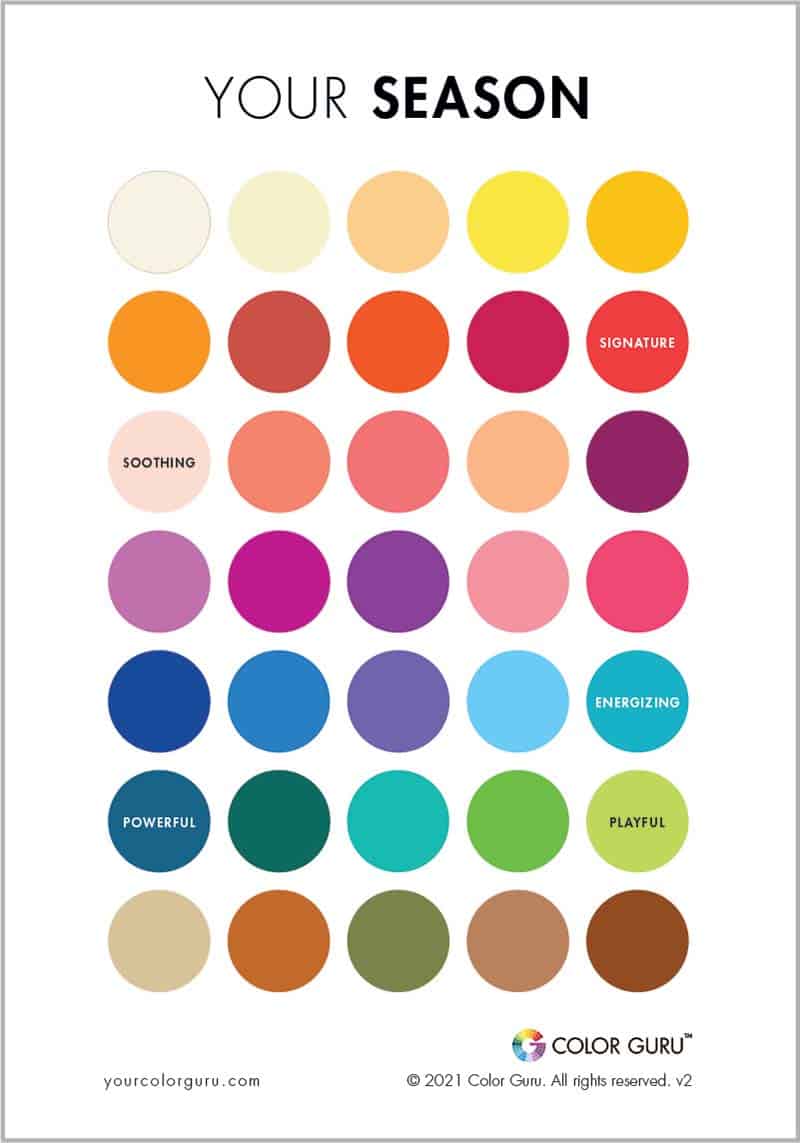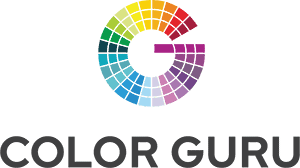Transform Your Look with Strategic Wardrobe Color Coordination

At Color Guru, we understand that a harmoniously coordinated wardrobe is not just about matching colors; it’s an art form that reflects your personality, enhances your natural beauty, and speaks volumes about your style. Through the lens of color analysis, we delve into the heart of your personal color palette, guiding you to discover the shades that make you shine. It’s not merely about adhering to the seasonal color theory—though knowing whether you’re a Summer, Winter, Autumn, or Spring is a great starting point. It’s about understanding the subtle nuances of color harmony, how certain hues can elevate your mood, complement your skin tone, and seamlessly integrate with your lifestyle. Our unique approach combines the foundational elements of the color wheel with the latest trends and sustainable fashion insights, ensuring your wardrobe is as timeless as it is vibrant.
What sets us apart is our dedication to personalization and innovation. We believe every individual is unique, and our online color analysis tool is designed with this in mind, offering customized advice that transcends the one-size-fits-all solutions. From selecting foundational pieces in your ideal neutrals to adding splashes of your best accent colors through accessories and statement pieces, we’re here to ensure your wardrobe reflects the true essence of who you are. With Color Guru, you’ll discover how to mix and match colors with confidence, create looks that are both trendy and tailored to you, and build a color-coordinated wardrobe that brings joy and color to every day. Let us be your guide on this colorful journey, and watch as your wardrobe transforms into a reflection of your best self.
Discovering Your Color Palette
Understanding Seasonal Color Analysis
Seasonal color analysis is a foundational principle in personal style development, enabling individuals to identify which colors best complement their natural attributes. This method categorizes personal coloration into four general seasons—Spring, Summer, Autumn, and Winter—each associated with a set of characteristics and colors that harmonize with an individual’s skin tone, hair color, and eye color. Spring and Autumn are typically warm tones, while Summer and Winter are cool tones. Determining your season is not just an exercise in curiosity; it’s a practical guide to choosing wardrobe colors that enhance your natural beauty and convey your personal style.
Exploring the four seasons: Spring, Summer, Autumn, Winter
Each season suggests a palette that resonates with the natural colors of that time of year. For example, Spring individuals thrive in clear, warm colors like peach and soft greens, reflecting the freshness of spring. Summer palettes are soft and cool, with pastel hues reminiscent of summer skies. Autumn individuals resonate with the earthy, rich colors of fall, such as deep oranges and mossy greens. Winter individuals shine in bold, cool colors like crisp whites and icy blues, mirroring the clarity and contrast of winter’s landscape.
Determining your season and its impact on your wardrobe
Identifying your season involves evaluating the contrast between your skin, hair, and eye color, as well as your skin’s undertone. This understanding directs your wardrobe choices, encouraging selections that complement your natural palette and enhance your overall appearance.
The Role of Skin Tone, Hair Color, and Eye Color
The interplay of your skin tone, hair color, and eye color is central to discovering your personal color season. Skin undertones are categorized as warm, cool, or neutral, influencing which colors will harmonize with your natural coloring.
How to identify your skin undertones: Warm, Cool, Neutral
Warm undertones have a golden, peachy, or yellow cast, cool undertones have a blue, pink, or ruddy complexion, and neutral undertones are a mix of both, offering a versatile palette. Understanding your undertone is crucial in selecting colors that will naturally enhance your appearance.
Matching your wardrobe to your natural colors
Once your undertone and season are identified, you can confidently choose clothing that complements your natural coloring, resulting in a cohesive and attractive look.
The Basics of Color Coordination
Color Wheel Fundamentals
The color wheel is an essential tool in wardrobe coordination, illustrating the relationship between colors. It consists of primary (red, blue, yellow), secondary (orange, green, purple), and tertiary colors (mixes of primary and secondary colors). Understanding these relationships enables individuals to mix and match clothing pieces effectively.
Primary, Secondary, and Tertiary colors
Using the color wheel, one can create visually appealing outfits by combining colors in complementary (opposite each other on the wheel), analogous (next to each other), or monochromatic (different shades of the same color) schemes. These schemes provide a structured approach to incorporating variety and interest in your wardrobe.
Understanding complementary, analogous, and monochromatic schemes
Complementary schemes offer high contrast, analogous schemes provide harmony, and monochromatic schemes create depth. Each has its place in a well-coordinated wardrobe, allowing for flexibility in expressing personal style.
The Psychology of Colors
Colors have the power to influence mood and perception. Understanding the psychology behind colors can help in choosing wardrobe colors that project the desired image and emotional response.
What colors convey: mood, perception, and reactions
Different colors can evoke various feelings and reactions; for example, blue can appear calming, while red might seem energetic or assertive. Selecting colors based on their psychological impact can enhance personal expression through fashion.
Choosing colors that reflect you
By choosing colors that resonate with your personal color analysis, style and mood, your wardrobe becomes a reflection of your identity, empowering you to present yourself confidently to the world.
Implementing Color in Your Wardrobe
Building a Color-Coordinated Wardrobe from Scratch
Creating a color-coordinated wardrobe begins with understanding the essentials of a versatile wardrobe. This foundation consists of base colors, which are typically neutral shades that can mix and match with multiple items. These colors often include black, white, gray, navy, and beige. From there, accent and statement colors are selected to inject personality and vibrance into the wardrobe. Accent colors complement your base colors and can be used in accessories or secondary clothing items, while statement colors are bold and are often used sparingly to create focal points in an outfit.
Essentials of a versatile wardrobe
A versatile wardrobe contains a balanced mix of clothing items that serve multiple purposes and occasions. This includes a variety of tops, bottoms, dresses, outerwear, and accessories that can be combined in numerous ways to create outfits that range from casual to formal.
How to choose your base, accent, and statement colors
Choosing your base colors involves selecting shades that flatter your natural coloring and can be easily paired with other colors. Accent colors should highlight your personal style and work well with your base colors, while statement colors are chosen for impact and are typically used in standout pieces or accessories.
Mixing and Matching Colors with Confidence
Mixing and matching colors with confidence requires a basic understanding of the color wheel and color schemes. Complementary colors, which are opposite each other on the color wheel, create vibrant looks. Analogous colors, which are next to each other on the wheel, offer a more harmonious appearance. Monochromatic color schemes involve different shades and tints of a single color, creating depth and interest with a single hue.
Strategies for bold color combinations
Bold color combinations can be achieved by pairing unexpected colors together, such as mixing pastels with deep, saturated hues or combining multiple bright colors in a single outfit. The key is to maintain balance by using one color as the dominant shade and others as accents.
Tips for using patterns and textures
Patterns and textures add dimension to your wardrobe and can be mixed with solid colors to create interesting and dynamic outfits. When mixing patterns, vary the scale (large with small) and maintain a cohesive color scheme to ensure harmony.
Advanced Techniques and Trends
Seasonal and Trendy Colors
Staying updated with seasonal and trendy colors allows you to refresh your wardrobe and keep it current. However, incorporating these colors should not compromise your personal style. Choose trendy colors that complement your existing wardrobe and flatter your natural coloring.
How to incorporate seasonal trends without losing personal style
Incorporating seasonal trends into your wardrobe involves selecting pieces that resonate with your personal style while updating your look with current colors and designs. This could mean adding a few trend-forward accessories or clothing items in the season’s hottest colors to your classic base pieces.
Adapting runway trends to everyday wear
Runway trends can often seem bold and impractical for everyday wear. The key to adapting these trends is to interpret them in a way that fits your lifestyle and personal taste, such as by incorporating a trend through a color, pattern, or silhouette that complements your existing wardrobe.
Sustainable Wardrobe Color Coordination
Choosing timeless colors for the core pieces of your wardrobe ensures longevity and minimizes waste. These colors tend to be more neutral and versatile, allowing them to be worn across multiple seasons and trends.
The role of fabric types and dyes in color retention
Selecting high-quality fabrics and dyes is crucial for maintaining the color and integrity of your clothing over time. Natural fibers and high-quality synthetic blends are more likely to retain their color and shape, making your wardrobe more sustainable and cost-effective in the long run.
Real-Life Applications and Inspirations
Color Coordination Success Stories
Real-life success stories of individuals who have mastered wardrobe color coordination can provide inspiration and practical advice. These stories often highlight before and after transformations that showcase the power of understanding and applying color analysis principles.
Before and after transformations
Before and after transformations demonstrate the immediate impact that the right colors can have on an individual’s appearance and confidence. These transformations often include testimonials and personal journeys that highlight the transformative power of color.
Interactive Color Analysis Tools
Our online color analysis tool is designed to help individuals discover their perfect colors without the guesswork. By analyzing your skin tone, hair color, and eye color, the tool provides personalized color recommendations that can be directly applied to building a color-coordinated wardrobe.
Tips for getting the most accurate results
To get the most accurate results from online color analysis tools, ensure that you provide high-quality, well-lit photos that accurately represent your natural coloring. Follow any specific instructions provided by the tool for the best outcomes.
Enhancing Personal Style with Color
Understanding and implementing color in your wardrobe is not just about following rules; it’s about expressing your unique identity and enhancing your personal style. By carefully selecting your base, accent, and statement colors, and staying open to experimenting with seasonal trends, you can create a wardrobe that is both timeless and expressive. Remember, the best color in the whole world is the one that looks good on you.
How To Get Started With Our Custom Color Palette Service
Are you ready to unlock your style potential and radiate confidence like never before? Getting started with Custom Color Palette is a breeze. Begin by exploring our range of tailored packages.
Whether you’re aiming for a complete wardrobe makeover or seeking makeup guidance, we have the perfect package for you. Once you’ve found your match, simply add it to your cart and proceed to checkout on our secure platform.
If you have questions or specific preferences, don’t hesitate to reach out to our friendly Color Guru team during our business hours from 9AM to 5PM EDT. We’re here to assist you every step of the way.
Once you’ve made your selection, sit back, relax, and let our experts work their magic in creating your personalized color palette. Embrace your newfound style with confidence, knowing that your unique personality will shine through the power of colors. Your style journey begins here, so take the plunge and let Color Guru be your guide to a more vibrant and confident you.

A color card is your cheat sheet for enhancing your personality, and are based on your unique hair, skin, and eye color. Just match the colors on the card with the clothing in the store, and voila! You know that you’re choosing a wonderful color for you.
Here’s Kat (Sunlit Spring) with her color card.
FAQ
Color coordinating your wardrobe involves selecting clothes that complement each other in color and tone. Start by choosing a base of neutral colors, like black, white, grey, and beige, as they can easily match with other items. From there, add pieces in your favorite colors or shades that flatter your skin tone. Implementing a color palette that reflects the seasons or your personal style can also add variety while maintaining harmony. Consider using a color wheel to find complementary or analogous colors for more adventurous pairing.
Organizing your wardrobe by color not only makes it visually appealing but also practical, as it allows you to quickly find and match pieces. This method saves time and reduces the stress of deciding what to wear. By grouping clothing by color, you can easily mix and match items to create outfits that coordinate well. Additionally, this organization can help you identify which colors you own the most and which areas of your color palette may need expansion.
The colors in your wardrobe should reflect your personal style, complement your skin tone, and offer versatility for various occasions. Neutral tones like black, white, navy, beige, and grey are essential as they serve as the foundation for mixing and matching with bolder colors. Adding garments in these colors ensures that you have staples that can be paired with almost anything. Beyond neutrals, choose a few colors that you love and that look good on you, focusing on those that can be easily integrated into your existing wardrobe for a cohesive look.
If you’re looking for an easy way to look better, shop smarter, and create a coordinated wardrobe, there is no smarter approach than simply discovering your best colors!



